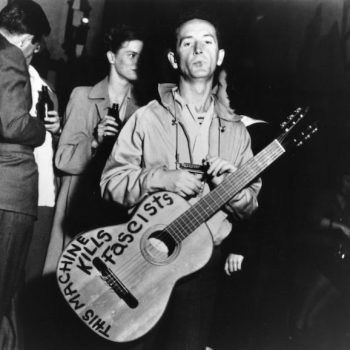I put Zizioulas down for the week. I’m trying to get through Pannenberg’s book on the church this week. Here are my notes from chapter one:
CHAPTER 1 – CHURCHLESS CHRISTIANS
He calls people who supposedly subscribe to Christianity without Christian church involvement “churchless Christians.”
As churches grew more sectarian, and denominationalized. Each denomination began to vie for political power. As they did, no one sect could claim universality and thus religion became a privatized affair. 11
The reformation claimed freedom for the individual and preached tolerance and religious liberty and as a result general civil liberty. So for those who were into civil liberty, didn’t want to chuck their faith, but felt more of a call toward justice, there was sort of a move toward “Christianity outside the church.” 12
“Christianity outside the church is dependant on the churches for its continued existence” 12 for two reasons.”
- “they build systems of doctrine without which the Christians outside the church could not preserve their consciousness of belonging to Christendom. 12
- “Christian faith needs a community as the context for its life, and only in such a community can it develop.” 15 namely a community of love and social justice.
“The Christian community in its life together makes visible the lordship of God, which is the future of the world, the future of all mankind. The idea of God’s lordship is not an optional addendum to the idea that the destiny of human society is life together in peace and justice. On the contrary, the biblical and Christian awareness of God’s lordship is the sole condition for peace and righteousness among men and women. where people govern, the rights of the governed are continually being violated, and peace is shattered. It is only there where, instead of all human rule, God himself rules, that peace and justice can flourish unhindered in human communities.” 16
Here he is making the case that denominations are more concerned with maintaining their own heritage than with serious unity within the body. It’s a pretty good point – something which I never even think about having been outside the realm of the denomination for so long.
Three Conclusions:
- “The model of human community which the Christian church is to represent dare not be indebted to human lordship for its unity, but only to the lordship of God himself.” It cannot be trusting in the hierarchy of bishops, priests, elders, etc.
- “Only if the community of the church is based solely on the lordship of God and of Christ can the church be the symbol and instrument of the unity of mankind.” 20
-
“The church can have only symbolic significance for the destiny of mankind to participate fully in a community of peace and justice in the Kingdom of God. It cannot by itself achieve this unity in a world where relationships rest on the lordship of some men and women over others…as an instrument for achieving the unity of mankind the church can function only through activities that are expressions of the symbolic nature of its existence as a sign of that unity.” P2
He then goes on to argue that the primary symbol should be communion. It is what has the symbolic power to unite the fragemented sects. But communion is interrupted by the disunity of denominationalism.
“This is Christianity’s most important task in our century. Any other reforms of the life of the church will remain ineffectual unless this problem is solved, unless the separated Christians mutually recognize one another and express this recognition in the common celebration of the Lord’s Supper.” P.22












